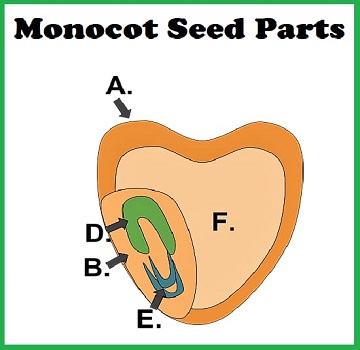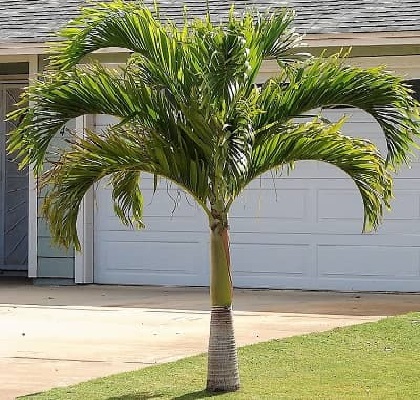- Home
- What are Palms?
What is a Palm Tree?
What is a palm tree - Did you ask?
You can certainly get a technical dictionary-like, or botanical definition. And we'll help you with that, alright. But will that get your understanding of what a palm tree really is?
We're not sure it will. If you want to understand some of the basics about this gorgeous plant. Because you can say, it is a "tree" of a different sort!
Or if you want to get the Science Classification out of the way, right away. Or scroll a short way down to see it!
Feeling overwhelmed by so many palm trees?
You're not alone. We Understand your headaches! At Mission: Palm Trees you'll find clear answers to questions & Step-By-Step Guidance, from real people. With solutions to help. No puzzling shoptalk. No tiring research. So it's easy & fun for you.
LET'S GET TO THE DETAILS
OR CONTINUE DOWN THE PAGE TO TAKE IT ALL IN!
Scientific Classification of Palms
First of course it's in the plant kingdom.
The family that palms are in is called Arecaceae (preferred). Still sometimes called Palmae (the older name). It's an flowering, perennial with many varieties. Which arose in the time of dinosaurs, the Late Cetaceous Period.
Yet, not all Plants or Trees That Look Like Palms are palms.
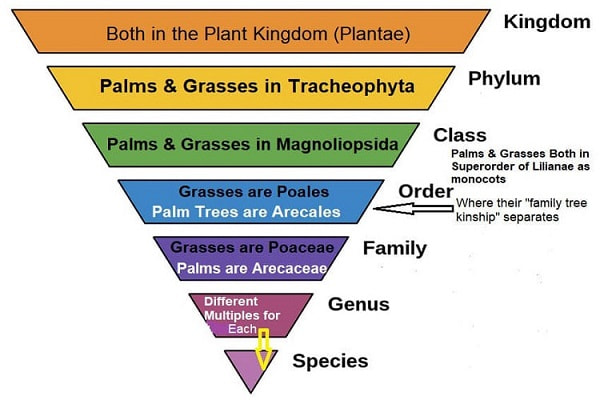 Some think palm trees are a kind of grass.
Some think palm trees are a kind of grass.Way up the plant kingdom, they have a relationship, but that's all!
Over 2600 Species of Palms!
ORGANIZED LIKE A FAMILY TREE
Sort-of think of it how it's organized, like your own family tree. The whole tree, with its branches, is the family. With the couple who began their tree of descendants.
- For palms, that analogy would be the Arecaceae family.
Cousins & Their Parents
Next think about your aunts, uncles & cousins. That begins other smaller branchings. You're all related by DNA. You might have some similar characteristics.
I remember two cousins I knew who almost looked like they could be twin sisters! You may have known someone like that yourself.
- For palms this is like various sub-families. There are six total, then divided into tribes & even sometimes subtribes. An example of a palm sub-family is Coryphoideae, which contains 3 tribes.
Mom & Dad
Then look to your family tree branches for your parents. This is your closest relationship.
- For palms, that would be the assorted genera groupings. They have characteristics that put them in the same genus group. Closely related. An example of a genus is the Phoenix palms.
Siblings
Then there are also your brothers & sisters. They're also very closely related.
- With palms, we can compare that relationship to the species. Which itemizes each type of palm tree.
We hope that gives a general idea of how that all works. But there's more to knowing about what is a palm tree to understand this unique plant!
How Does a Palm Tree Grow
Palm trees grow primarily from seed. Yet they do have ways of spreading out by using suckers from their base to grow more trunks. That's called clumping or clustering. That's an alternate Palm Propagation Choice, used on occasion.
MONOCOTS
Palms are monocots. The seedling has only one seed leaf. It sprouts from the seed to rise above ground.
This separates them from most deciduous trees, shrubs & garden flowers. They're all dicots. Palm seeds range from easily starting to sprout, to quite difficult.
GROWTH PROCESS
What they all do is begin the below ground action first. They all need warm temperatures for success. A minimum of 86oF/30C up to even the high 90s/32s to 100oF/37.8C range.
- Most of a palm seed has inner nourishment for starting palm tree growth. Called the endosperm.
- Think of the coconut's meat & milk. Which is that palm seed's endosperm.
 The Coconut Palm's Seed has Endosperm
The Coconut Palm's Seed has EndospermNourishment for a New Palm's Initial Energy Source
First Growth
From the seed bottom out shoots a cotyledonary petiole. It's not a root, though it grows downward. Until below it does start a seedling root (radicle).
Next Growth
From the top of that petiole comes the seedling stem (plumule). To form the trunk's beginnings. And atop it, the first single leaf.
Root Change
Soon the seedling root stops working. Replaced by root growth from the stem's specialty area. Called the root initiation zone. This happens during the palm's Establishment Phase.
- When roots begin growing, they come forth from the stem's base. From out of the root initiation zone. Called adventitious roots.
- Growing out at the same thickness they'll always be.
- Palm roots can branch to four levels. They don't have root hairs.
What is a Palm Tree Baby?
For more understanding on what is a palm tree, think about this Establishment Phase. The Baby Palm Tree forms the meristem, or palm heart. That starts upward growth. While getting to this time, two things are happening:
- Root initiation zone completes.
- Adventitious roots grow straight downward.
- System that brings nourishment up through the trunk is formed.
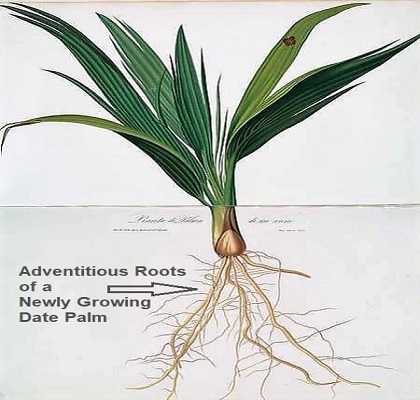
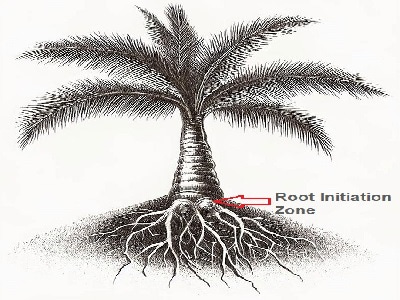
PALM TRUNK GROWING METHOD
The palm's stem, or trunk, grows above ground. That can't begin until the Establishment Phase is ready. When the palm heart gets to an effective size.
While growing, a baby palm tree first works on expanding its base trunk to full width. It won't grow further upward until that is all done. Creating the footing for upward growth to maturity.
So take heart, when your baby palm tree isn't getting taller! That's normal. It must finish its establishment phase. It must first grow its trunk to its greatest diameter. Then it will begin to grow taller. That's One of Their Own Special Characteristics.
Inside of a Palm Tree
Because it's a Monocot, the palm's guts are totally different from a typical elm or beech tree.
If you've ever seen the stump of a palm tree, you may have noticed there aren't growth rings. Like what you're used to seeing on oak or maple tree stumps.
Because it's a Monocot, the palm's guts are totally different from a typical elm or beech tree.
If you've ever seen the stump of a palm tree, you may have noticed there aren't growth rings. Like what you're used to seeing on oak or maple tree stumps.
FOOD TRANSPORT
A specialized system brings nourishment from the roots upward throughout the palm. It's through many palm bundles. These bundles are networks to move the palm's "food" throughout the plant. It has these parts:
- Phloem tissue, which brings carbs from leaves to other parts of the palm.
- Xylem tissue brings water with dissolved minerals.
- Fibrous sheaths, quite inflexible, surround most bundle tissues.
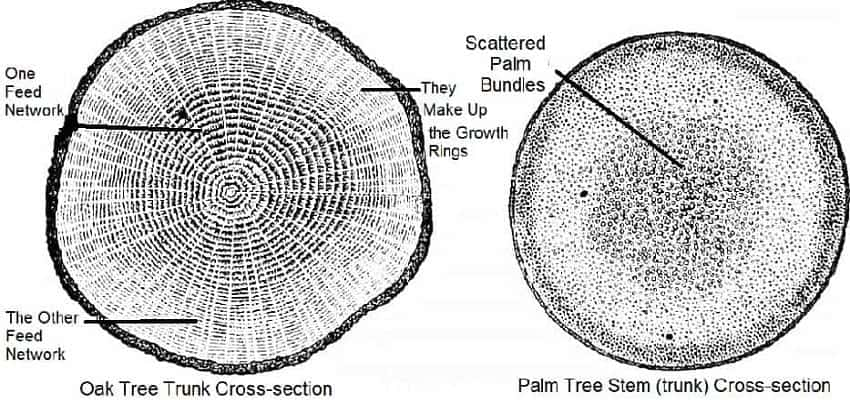 Palm Bundles Scattered Through the Center & Thickly Around the Outer Edge
Palm Bundles Scattered Through the Center & Thickly Around the Outer EdgeVery Different From the Typical Oak Tree, etc.
PALM'S FLEXIBLE DURABILITY
The bundles are scattered amidst soft inner tissue. These stiffly covered bundles are jammed into outer trunk areas. And dispersed toward the center. Compare this bundle network to steel rebar reinforcement.
That's why during tremendous wind conditions, palms can bend without breaking.
Palm Trunk Outer Systems
NO BARKING!
Palm trunks don't have a typical bark layer. They do have an outer hard layer that's protective. The look of the Trunk's Surface is quite variable, depending on the species.
Trunks begin growing from seedlings. To hold up palm fronds. And support the entire plant. Palm Trunks have surprising varieties of Palm Tree Colors existing throughout the world.
Pictorial Tutor of Palm Trunk Styles
 Smooth Ringed Trunk of the Howea belmoreana
Smooth Ringed Trunk of the Howea belmoreana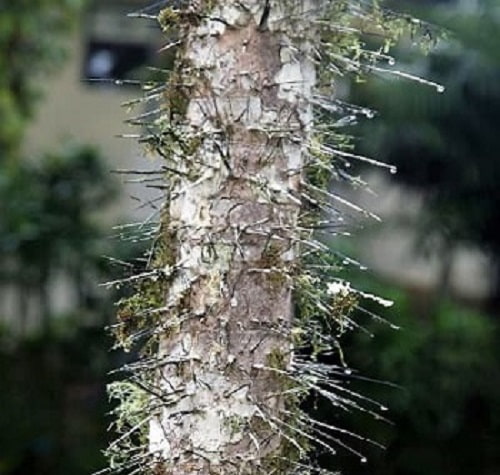 Yikes! Beware of the Spikes!!
Yikes! Beware of the Spikes!!On This Aiphanes aculeata's Stem
Photo: David J Stang - CC BY-SA 4.0
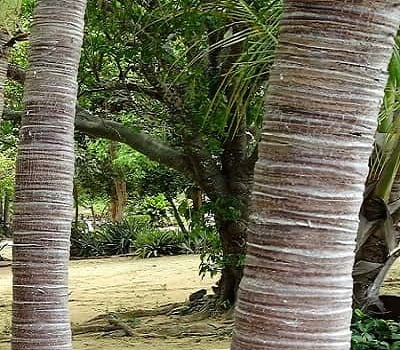 Adonidia merrilli palm with close-in smoothly handsome ringed trunk.
Adonidia merrilli palm with close-in smoothly handsome ringed trunk.Photo: Peter Needle - CC BY-SA 4.0
 Phoenix roebelenii Palm's Leftover Sheath Bases Remaining on the Trunk
Phoenix roebelenii Palm's Leftover Sheath Bases Remaining on the Trunk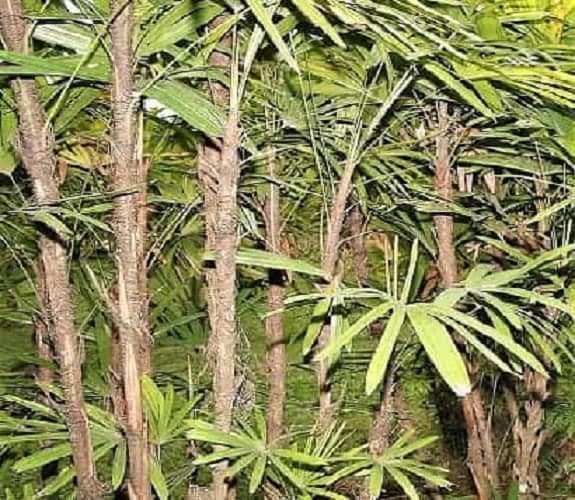 On Rhapis excelsa Palm Trunks
On Rhapis excelsa Palm TrunksThe Fibrous Leftover Sheaths Stay
Photo: David J Stang - CC BY-SA 4.0
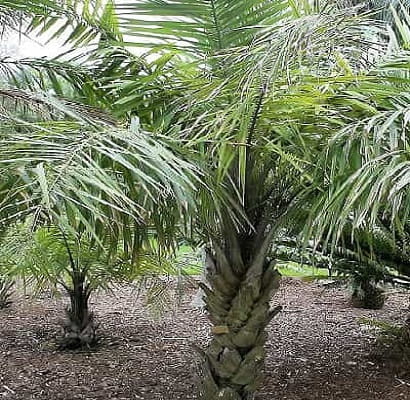 Syagrus coronata palms keep their leaf bases!
Syagrus coronata palms keep their leaf bases!Do you think tt gives it character?
Photo: David J Stang - CC BY-SA 4.0
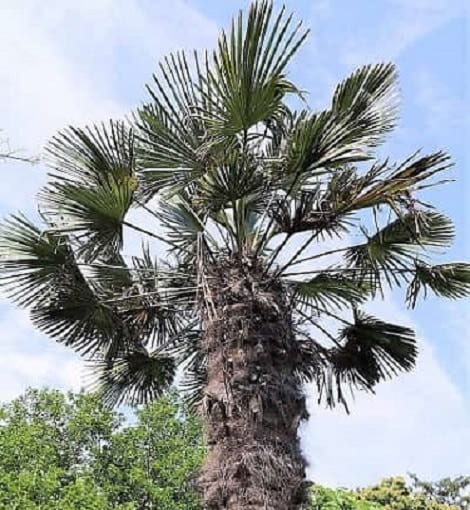 Trachycarpus fortunei likes to keep its leaf bases. Surrounded by a coat of fibers.
Trachycarpus fortunei likes to keep its leaf bases. Surrounded by a coat of fibers.Photo: CT Johansson - CC BY-SA 4.0
Palm Tree Leaves
The name for palm tree leaves is palm fronds. Their biological structure is basically like other leafed plants.
NOVEL SURVIVAL APPROACH
Yet they do have some unique aspects.
- New fronds arise upward, in a narrow cylindrical shape. Called a spear. Helping reduce water loss or sunburn of a newly "born" leaf.
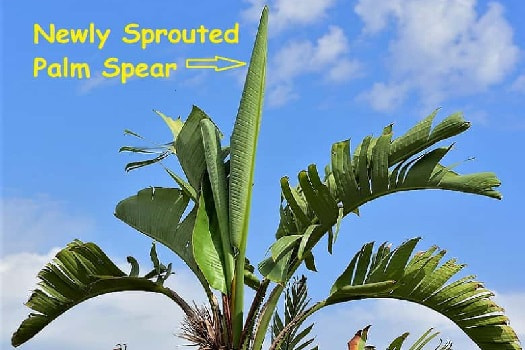
- Some palms have water conserving methods via their fronds:
- Leaflets with folds or hanging at angles to reduce sun's drying effects.
- Shiny surfaces to help reflect sunshine.
- Wax-like, wooly or scaly coverings that serve as protective coatings.
TRUNK ATTACHMENT
The frond's stalk or stem is called the petiole. The attachment to the trunk is called the leaf base or Leaf Sheath. The frond has a lifespan. Different palm species manage this in various ways:
- Some palms detach the leaf from the trunk. But the Leaf Sheath remains behind.
- Other palms eject the frond along with the leaf sheath from the trunk. Leaving a scar, but the stem is smooth.
- Various species keep their shag skirt of dead fronds.
- Like the Washingtonia species here.
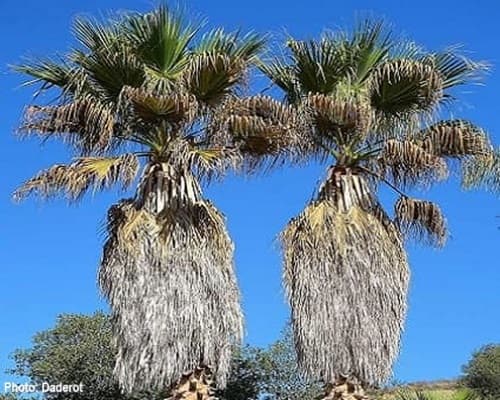 Washingtonia filifera - The California Fan Palm.
Washingtonia filifera - The California Fan Palm.The only Palm Tree indigenous to that state!
Twins growing at the Leaning Pine Arboretum
In San Luis Obispo, California
Types of Fronds
Fronds are separated widely into two groups. Based on the blade's (the green leafy area) appearance:
- Pinnate Fronds - These have a feathery look. So, called Feather Palms.
- Palmate Fronds - These look like the palm of a hand. With fingers spreading out. They also resemble a fan. So, called Fan Palms.
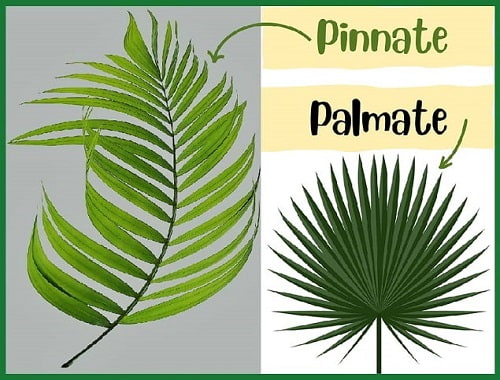
Both of these fronds can be further subdivided.
Are you learning what exactly is a palm tree? Please Let Us Know> Getting to know the terms & Parts of a Palm. To help your understanding gradually become easier!
Palm Tree Flowers
Palm trees have their own unique ways to produce flowers.
Variably for when they begin to show. Some after about three years old. Others not until 30+ years under their belt!
Palm tree flowers are very small. But they grow out onto a long branching called an Inflorescence. Some palm species have flower stalks that are tapped for sap to turn into Palm Wine for Toddies.
When & Where Do Palm Trees Have Flowers?
Where the inflorescence grows from the trunk is also helpful for palm identification.
It springs from different areas depending on species:
- Just below the crown of palm fronds
- From amidst the palm's crown
- Or even at the top of the crown.
- A few grow at ground level. Even below, for subterranean growth.
Most palms will have three to five inflorescences grow out each year. Some only one yearly.
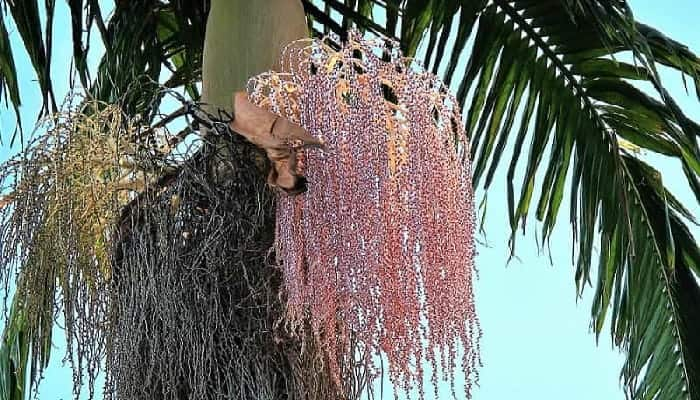 This palm in Saddleback Valley California Has flower inflorescences below the crown shaft. Pretty pink, tiny blossoms!
This palm in Saddleback Valley California Has flower inflorescences below the crown shaft. Pretty pink, tiny blossoms!Photo: Bennilover @Flickr - CC BY-ND 4.0
HOW?
The inflorescence begins with a specialized protective leaf covering. Called a bract or spathe. It doesn't look like a leaf, but has a woody look to it.
It opens up to allow the branching to start.
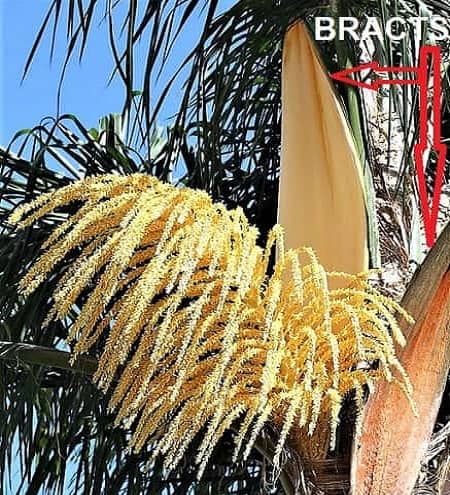
PALM FLOWERS
Along the usually lengthy inflorescence are tons of small flowers. That's what makes palm tree flowers more vivid to the eye. Yet, they don't stay around long. Sometimes a day or less!
Most have yellow to creamy coloring. But some are pink to reddish, green or orange. They also can smell quite nice.
Though numbers of them are stinky!

Palm Tree Reproduction
FIRST - POLLINATE!
Pollination mostly happens with the help of insects. Sometimes it's with the wind's pollen transfer.
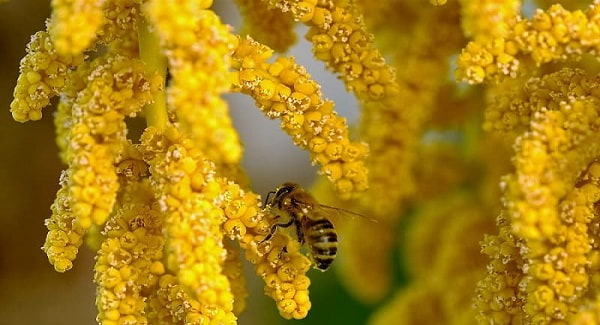 Bees are valuable pollinating insect for palms.
Bees are valuable pollinating insect for palms.PALM TREE GENDERS
Palms have several flower genders:
- Bisexual - Both male & female reproductive parts on a single flower.
- Unisexual - Either male or female reproductive parts on one flower. The flower is male, or it is female.
Palm plants have Multiple Gender Arrangements.
A palm species' inflorescence has both male & female unisexual flowers.
- Palm can have male flowers on one inflorescence, while having female flowers on another inflorescence. These are monoecious.
- Palm trees may have all inflorescences with only male flowers. Or with only female flowers on all their inflorescences. These are dioecious.
- Palms can also have unisexual & bisexual flowers on the same plant. These are polygamous.
What Is A Palm Tree Flower For?
All in all, the purpose of the flowers, of course, is to form Palm Fruits. Which carry on this gorgeous species, by using their reproductive process.
When making fruit, it then gives more seeds for growing more palms.
 Small palm tree fruit like these are called berries.
Small palm tree fruit like these are called berries.Palm Tree Varieties
There are so many palm tree varieties to consider. You really have to figure the reason for knowing what is a palm tree in your search. Perhaps you were looking into one of these:
- Did you want to know the best kind of Palm Tree House Plant?
- Are you not in the tropics? Maybe you'd want to research a type of Cold Hardy Palm Tree you could use for Your Own Landscaping Ideas.
- Were you looking into species that were Fan Palm Tree varieties? Or Feather Palm varieties?
We have plenty of areas to peruse, that might be helpful - when you check
Our Mission: Palm Trees Site Index>
What is a Palm Tree Takeaways
Palms can be analyzed with Linnaeus's scientific name analysis. Learning about where they fit within their anatomy helps to learn more about palms. Including those you've never seen.
The parts of palm trees will be a logical progression.
